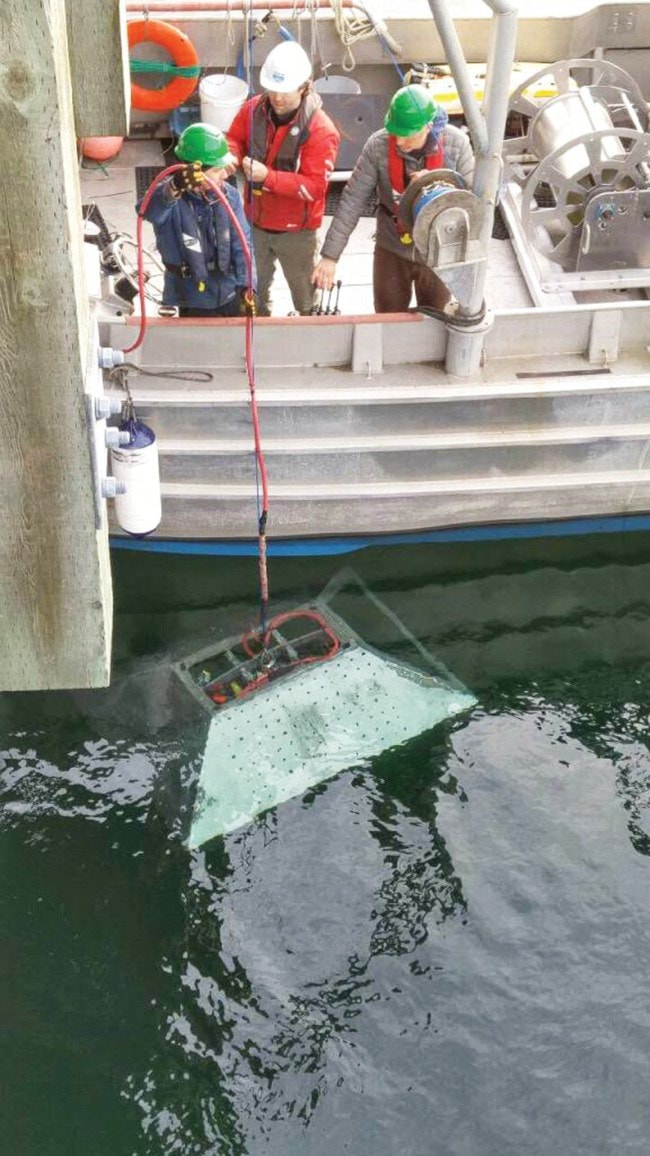After waiting out the worst of the spring weather, Ocean Networks Canada (ONC) managed to get its newest oceanographic research module into the water Friday, just off the end of our very own Discovery Pier.
The Campbell River community observatory is the first of many such ONC installations planned along our coast, including others set for Kitimat and Prince Rupert later this spring, and another planned down the road for Port Alberni.
The Campbell River node of ONC’s data-gathering network is a cabled platform of equipment to monitor water qualities like salinity, temperature, oxygen and chlorophyl levels – the basic information scientists are interested in knowing – encased in a sturdy metal frame to keep it from being damaged by strong currents and debris.
It also contains a live-streaming video camera and hydrophone so the public can see and hear what’s happening under our waters.
On the pier itself, a weather station and above-water camera will monitor environmental conditions above the surface of the water 24/7, as well.
All the data will be streamed to the Marine Heritage Centre and from there to the University of Victoria, where it is processed by ONC.
Data is freely available for downloading from anyone through the ONC website (oceannetworks.ca), which is the aspect of the project Associate Director of User Services at ONC, Maia Hoeberechts, is most excited about.
“Given the right tools and easy accessibility, scientific information coming from the ocean could be used by everyone in the community,” she says.
“From students to councillors to fishers, the community observatory can help them ground their decisions about their coastal and marine resources in science — or simply to better understand the ocean at their doorstep.”
Mercedes McLean, ONC’s indigenous community learning co-ordinator, says her and her team have been travelling “up and down the coast for the last year and a half or so, talking to communities about how they will be able to make use of these observatories,” and she is very excited to continue that discussion and explore the educational opportunities presented to the community now that the Campbell River observatory is operational and they continue to move forward with the rest of the installations.
At least one teacher in the Campbell River school system is equally excited.
Dan Klinka of Timberline brought the students from that school’s Stream to Sea Program down to the originally-planned launch – which was postponed due to weather – a week earlier, and said he’s very much looking forward to the opportunities provided by the observatory.
“This is going to be great,” Klinka said, excitedly, as the students gathered around the Remotely Operated Vehicle that would eventually help with the installation to learn more about the process.
“Having a system like this, right here in our own backyard, so to speak, will just add another dimension to the hands-on learning these kids already get to do here.”
“There isn’t a better place on the planet, I don’t think, for a program like (Stream to Sea) to run,” Klinka said – what with the forests, streams and tidal waters available for observation right outside the doors of our local schools – and access to the kind of instant oceanographic data provided by the new ONC observatory will only add to that.
For more information about the new observatory or any of ONC’s other initiatives and plans, head over to oceannetworks.ca.
